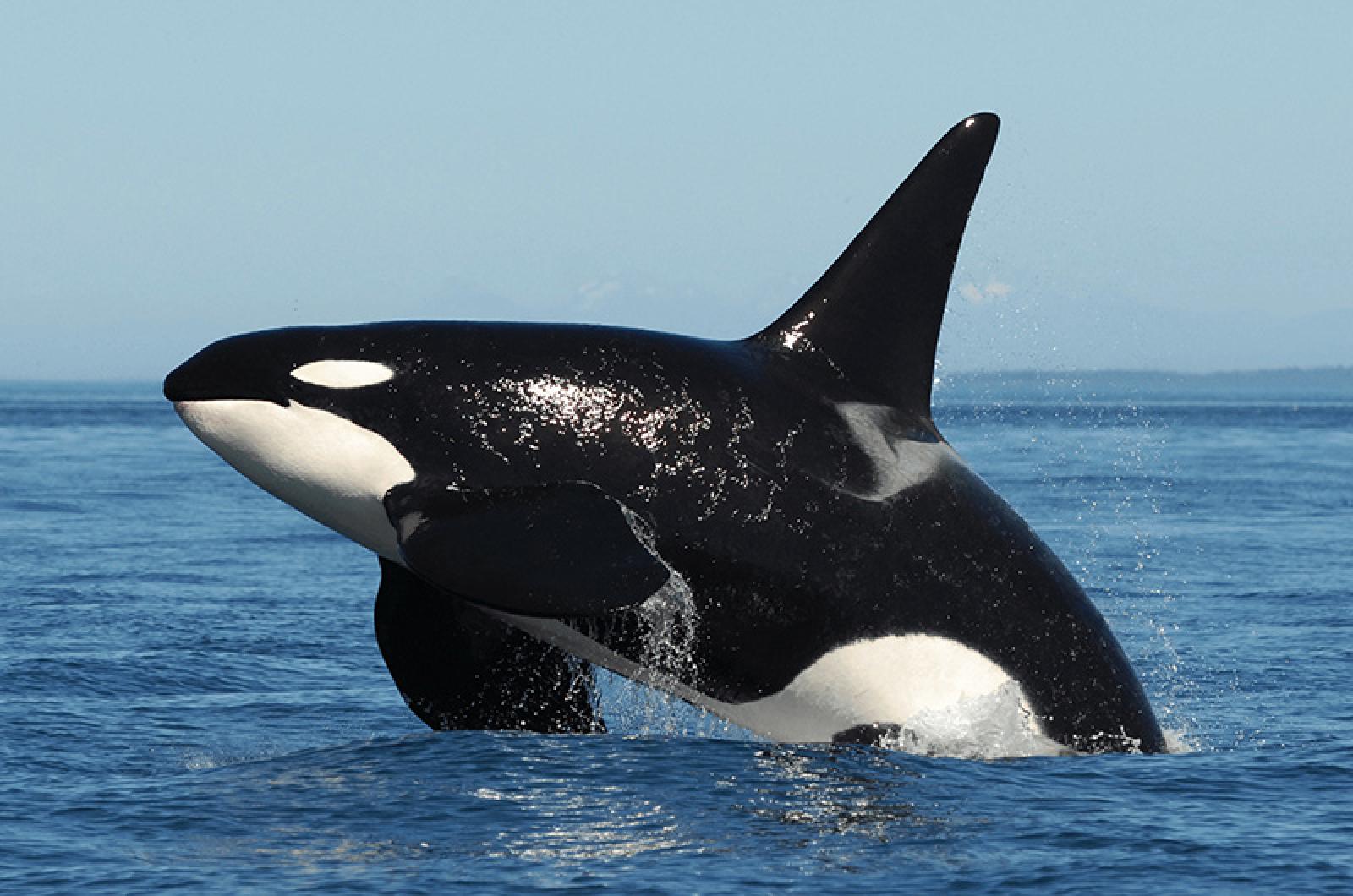Orcas sleep with one eye open.
This is more than just a good idea: it is an imperative for them to live. Orcas, also known as killer whales, needn’t worry about an enemy attacking them in the night (or day). In fact, these animals take heed not because of any predator but rather because to sleep with both eyes shut would mean death.
Keeping an eye open ensures that at least one side of the orca’s brain is active and that they are conscious and engaging in necessary bodily functions, specifically breathing. Orcas lack the reflex to respirate and do not breathe automatically. They must think to breathe and so can never go into a deep sleep; they risk death by suffocation. This is called “unihemispheric sleep” and describes the state of the brain where half is active and the other half is resting.
During this special sleep, orcas swim slowly. Luckily for them, they do not have to worry about being gobbled up when they are in a half-conscious state. As apex predators, these animals rule the oceans and lack attackers.
They are the hunters, not the hunted. Working in groups, or pods, orcas have been called wolves of the sea. As that name suggests, orcas coordinate hunting tactics and are effective killers. Prey varies and can include fish, seals, seabirds, otters, sea turtles, cephalopods, land mammals such as deer, and even other whales and dolphins.
Interestingly, orcas generally aren’t a threat to you or me in their ocean habitat. There have been no fatal attacks on human documented in the wild. However, when in captivity, orcas can be dangerous. These deadly dolphins have been known to injure or kill their handlers, or other humans with which they interact. Free Willy for sure — and for everyone’s safety!
Though called killer whales, orcas are, taxonomically speaking, toothed whales, which are actually dolphins. And they are the largest dolphin species. Historically, sailors saw them hunting and killing whales, especially young ones, as prey. The sailors referred to them as whale killers though the words eventually were transposed, becoming killer whales.
At about 30 feet long, their size is dwarfed by larger whales, so orcas’ collaborative hunting, well-honed skills and four-inch long teeth are factors that make them fierce — small and mighty killers. Their morbid mythology includes a scientific name, orcinus, that translates as “kingdom of the dead.”
Even with that epithet, orcas are more known for their long lives. Although the male of the species only lives to around 40 years old, the female boasts a longevity of almost 100 years and is part of an interesting club. Along with humans and pilot whales, female orcas go through menopause. At around 40 years old, female orcas end their reproductive life but keep going, leading their pod, finding their food and supporting their families for another 40 or more years.
Last week, an orca was sighted about 40 miles east of Nantucket. While orcas live in all the planet’s oceans, they are not often reported locally. Scientists with the Center for Coastal Studies in Provincetown share that orcas were more common in Cape Cod Bay during the 1960s and 1970s, often feeding on tuna. Perhaps because of this, in the 1975 movie Jaws, Captain Quint’s boat was named Orca.
All eyes were on that orca last week as the video taken from a fishing boat went viral. And whether you are using one eye, two, or more as some marine creatures will to spy this species, seeing is believing when it comes to these elusive and iconic animals.
Suzan Bellincampi is islands director for Felix Neck Wildlife Sanctuary in Edgartown and the Nantucket Wildlife Sanctuaries. She is also the author of Martha’s Vineyard: A Field Guide to Island Nature and The Nature of Martha’s Vineyard.







Comments
Comment policy »